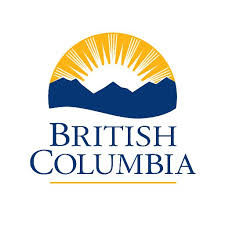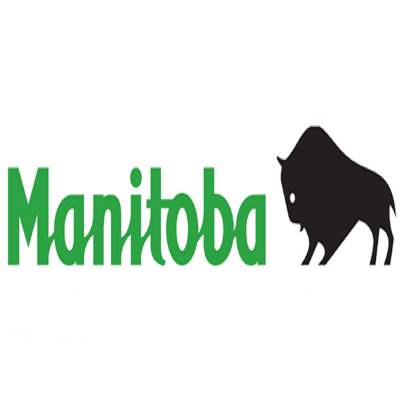permit
Type of resources
Available actions
Topics
Keywords
Contact for the resource
Provided by
Years
Formats
Representation types
Update frequencies
status
Service types
-

Areas in the Yukon where permits have been issued for commercial wood cutting. Distributed from [GeoYukon](https://yukon.ca/geoyukon) by the [Government of Yukon](https://yukon.ca/maps) . Discover more digital map data and interactive maps from Yukon's digital map data collection. For more information: [geomatics.help@yukon.ca](mailto:geomatics.help@yukon.ca)
-

This point dataset represents both applications for a Mines Act permit and issued authorizations for mining activities proposed in the application. Applications for regional Mines Act permits are known as Notice of Work (NoW) applications. Regional mine permits are issued for mineral and coal exploration activities, sand and gravel production, quarry production, and placer mining. Major mine permits are issued for producing mineral and coal mines. Permits are issued by the chief permitting officer under section 10 of the Mines Act and administered by the ministry. Regional mines include: * Exploration — mineral, coal, rock quarry, industrial mineral or dimension stone * Sand and gravel — aggregate, rock or natural substances used for construction purposes * Placer Most exploration and development activities require a permit under the Mines Act. A decision marks the end of the permitting process for a NoW application. The decision can either be to reject the application or to authorize the mining activities proposed in the NoW. * For new NoW authorizations, a Mines Act permit is issued * For an existing open Mines Act permit, the newly authorized mining activities are amended to the existing permit and the permit is re-issued **NOTE:** Administrative amendments to a NoW are not captured in this dataset. We are currently working to include this addition for a more complete view of the data. For proponents, please log into https://minespace.gov.bc.ca/ to confirm any authorizations on your permits. The ministry is transitioning from point data to polygonal data for permits and authorizations. The polygon dataset is added to when data becomes available. Users should use both the point dataset and the polygon dataset in combination. Polygon representation of permits with authorizations are referred to as Notice of Work (NoW) – Permitted Mine Areas – Regional Mine - Public https://catalogue.data.gov.bc.ca/dataset/c728435d-410e-42f9-81d5-95978c90e44a The downloaded product from the BCGW is a complete set of all the NoW public records. In addition to the records that contain lat/long references to be mapped spatially, this includes records that do not have NoW lat/long or mine lat/long coordinates to spatialize. These records are listed in a CSV file (HSP_NOTICE_OF_WORK_PA_POINT_SV_NullGeom). Notice of Work categories include: Notice of Work application type, Notice of Work application status. **Notice of Work application type** Field: NOW_APPLICATION_TYPE_DESC (NW_APPTYPD) * Coal * Mineral * Placer Operations * Quarry – Construction Aggregate * Quarry – Industrial Mineral * Sand and Gravel **Notice of Work application status** Field: NOW_APPLICATION_STATUS_DESC (NW_APPSTAD) * Approved – mining activities in the NoW application have been authorized * Client Delayed – Client needs to provide additional information or reclamation security * Government Action Required – Government needs to action; this status is triggered once a client has provided the requested information and client delay is no longer valid * Referred – Includes referral to agencies and stakeholders, and consultation with First Nations * Rejected – An application is rejected. Either the application standards are not met or requested documentation or security was not provided * Received – The NoW application has been sent from virtual FrontCounterBC to the ministry database * No Permit Required – Category when an inspector reviews the application and non-mechanized disturbance does not require a permit, for example an IP survey * Referral Complete – Referral and consultation is complete. The government needs to action the next steps * Withdrawn – Client requested the application to be withdrawn * Pending verification – Category for records needing review and verification. Typically, these are historical NoW applications with approvals. Manual review is required * NULL value – missing status and application type **For the public view, please be aware that the ministry:** * Only shows mine commodities of gold or jade/nephrite in the MINE_COMMODITY_DESC (MN_COMD) field. All other commodity values remain NULL (empty)
-
Created for distribution by the GeoYukon application as a comprehensive resource for all publicly available Mining information in the Government of Yukon. This data may be used directly by other applications to dynamically display Yukon data; however, it may be subject to change as data sets are updated or added.
-

The Placer Mining Land Use Regulations consist of a classification system based on varying levels of specific activities. These threshold levels categorize exploration activities into four classes of operation. Classes 1 through 4 represent activities with increasing potential to cause adverse environmental impacts. Distributed from [GeoYukon](https://yukon.ca/geoyukon) by the [Government of Yukon](https://yukon.ca/maps) . Discover more digital map data and interactive maps from Yukon's digital map data collection. For more information: [geomatics.help@yukon.ca](mailto:geomatics.help@yukon.ca)
-

[ARCHIVED] The requirement for non-commercial burn permits has been discontinued.
-

The Quartz Mining Land Use Regulations consist of a classification system based on varying levels of specific activities. These threshold levels categorize exploration activities into four classes of operation. Classes 1 through 4 represent activities with increasing potential to cause adverse environmental impacts. Distributed from [GeoYukon](https://yukon.ca/geoyukon) by the [Government of Yukon](https://yukon.ca/maps) . Discover more digital map data and interactive maps from Yukon's digital map data collection. For more information: [geomatics.help@yukon.ca](mailto:geomatics.help@yukon.ca)
-

The Adaptive Management Framework for Yukon placer mining is complemented by traditional knowledge and monitoring of water quality objectives, aquatic health, and economic health. The aquatic health monitoring program is governed by the Aquatic Health Monitoring Protocol. The Protocol describes the locations, timing, frequency and methods employed during sampling, as well as the methods used to analyze sampling data. The Reference Condition Approach (RCA) is the method chosen for assessing the health of freshwater ecosystems in the Yukon. One RCA model was developed for bioassessment based upon benthic macroinvertebrates, and a second model was developed to assess the diversity of fish species. The RCA model for invertebrates relies upon 224 reference sites collected over the period 2004 to 2010 by the University of Western Ontario, Fisheries and Oceans Canada, and Yukon G overnment, using the same standard protocol. The invertebrate data set was analyzed at the family level. There are two fundamental steps in the process of developing the predictive model. The first is to classify the reference sites based on their biological characteristics. This requires defining a number of community types based on the taxonomic composition. The second step is to determine a subset of habitat attributes that are associated with those community types. Following this step the number and type of organisms expected to occur at any given site can be determined from habitat attributes. For more information, contact the Yukon Placer Secretariat. Distributed from [GeoYukon](https://yukon.ca/geoyukon) by the [Government of Yukon](https://yukon.ca/maps) . Discover more digital map data and interactive maps from Yukon's digital map data collection. For more information: [geomatics.help@yukon.ca](mailto:geomatics.help@yukon.ca)
-

Describes active land use applications and permits required under the Territorial Lands (Yukon) Act 2003/51 Land Use Regulation for the purpose of permitting "any work or undertaking on territorial lands". Distributed from [GeoYukon](https://yukon.ca/geoyukon) by the [Government of Yukon](https://yukon.ca/maps) . Discover more digital map data and interactive maps from Yukon's digital map data collection. For more information: [geomatics.help@yukon.ca](mailto:geomatics.help@yukon.ca)
-

Describes closed land use applications and permits required under the Territorial Lands (Yukon) Act 2003/51 Land Use Regulation for the purpose of permitting "any work or undertaking on territorial lands". Distributed from [GeoYukon](https://yukon.ca/geoyukon) by the [Government of Yukon](https://yukon.ca/maps) . Discover more digital map data and interactive maps from Yukon's digital map data collection. For more information: [geomatics.help@yukon.ca](mailto:geomatics.help@yukon.ca)
-

This collection of interactive web maps shows issued construction permits and manure management plans required under the Livestock Manure and Mortalities Management Regulation (LMMMR) in Manitoba. This web mapping application provides information about livestock manure management in Manitoba. Each tab displays a different source of data, including issued construction permits for manure storage facilities and confined livestock areas, manure management plans, watershed information, and environment office coverage areas and contact information. Issued Construction Permits: This web map shows construction permits, issued under the Livestock Manure and Mortalities Management Regulation (LMMMR), for manure storage facilities and confined livestock areas in Manitoba. Facilities built before the permit requirement that are registered with the province are also identified on the map. Manure Management Plans: This web map shows where annual manure management plans (MMP) have been submitted in accordance with the Livestock Manure and Mortalities Management Regulation (LMMMR) in Manitoba. The map also shows boundaries for certain areas and the Red River Valley Special Management Area. Ordered Drains: This web map shows the Designated Drains Index and Watershed Districts in Manitoba. Each polygon in the Designated Drains Index represents a drain map area and includes a link to an online drain map. Watershed Districts were established under the The Watershed Districts Act, proclaimed on January 1, 2020. Manitoba's Watershed Districts Program creates healthy and sustainable watersheds through land and water stewardship programs and partnerships. With funding from the Manitoba government and partnering municipalities, locally-appointed watershed district boards make planning and management decisions to improve watershed health across most of municipal Manitoba. Environment Offices: This web map shows coverage areas and provides contact information for Manitoba government Environmental Compliance and Enforcement offices.
 Arctic SDI catalogue
Arctic SDI catalogue